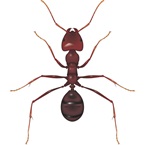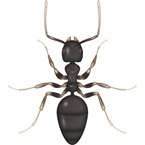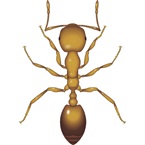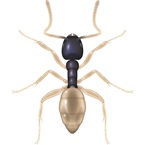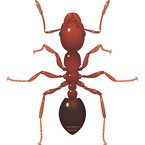Species category: Ant
Scientific Name: Lasius niger
Family: Formicidae
Description
One of the most common species of ants across the world, different members of the colony will have a slightly different appearance. Workers are dark brown-black and reach 3-5mm in length. The queens are mid brown and much larger; they can reach 15mm long.
The queen is characterised by 2 pairs of wings which are fore and hind wings hooked together. Once mated, she removes the wings and eats them for nutrition over the winter months.
Behaviour
Black ants have defined roles within their colony. Each nest has one queen (monogenic).
The worker ants (sterile females), build the nest, look after larvae, and forage for food.
The queens (fertile females) remain mainly in the nest, mating with fertile males.
Before mating, the ants take to the sky. Winged reproductive males and females are involved in a mass flight. The males die after mating, but the females shed their wings and burrow in the ground where they overwinter.
Any worker ants that exhibit unusual behaviour are expelled from nest or killed.
Region
Widespread across South East Asia.
Habitat
Generally, nests are located outdoors; they can be built in soil, hollowed trees, found in grasses or under paving slabs, behind fascias or any building voids. Foraging workers enter houses regularly in search of food, preferably sweet foods.
Risks
Once inside and around buildings, they can cause various types of damages. Black Ants enjoy the sweet secretions of aphids and protect the aphid population. In doing so, they allow the aphids to further damage the plants they inhabit.
These ants can cause structural damage by shifting the foundation sand and create uneven patches and even holes in turf by moving soil underneath.

